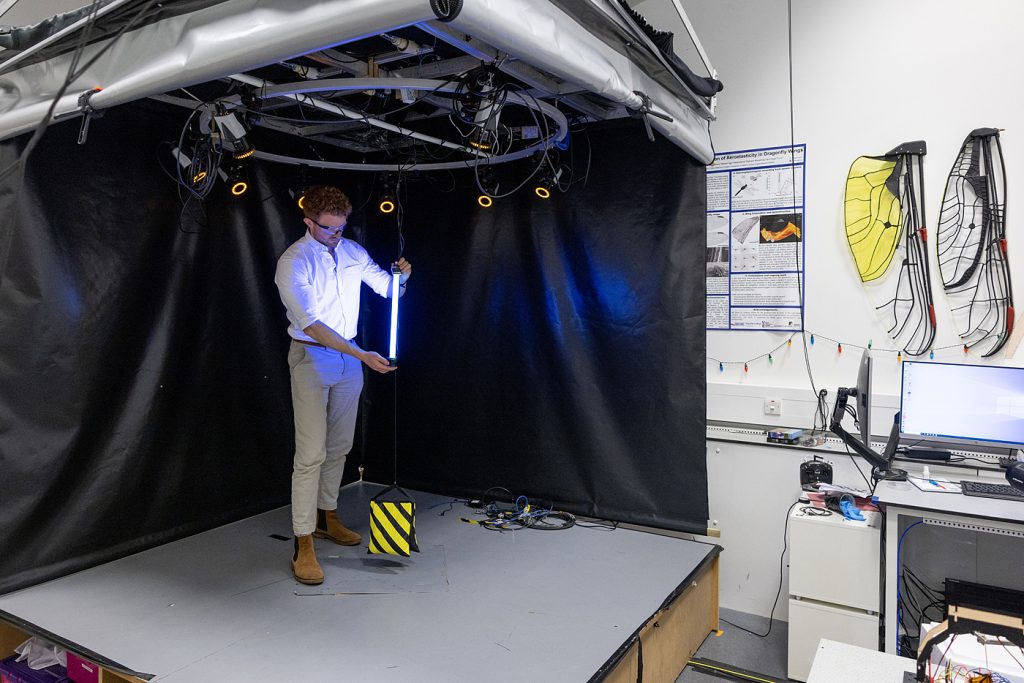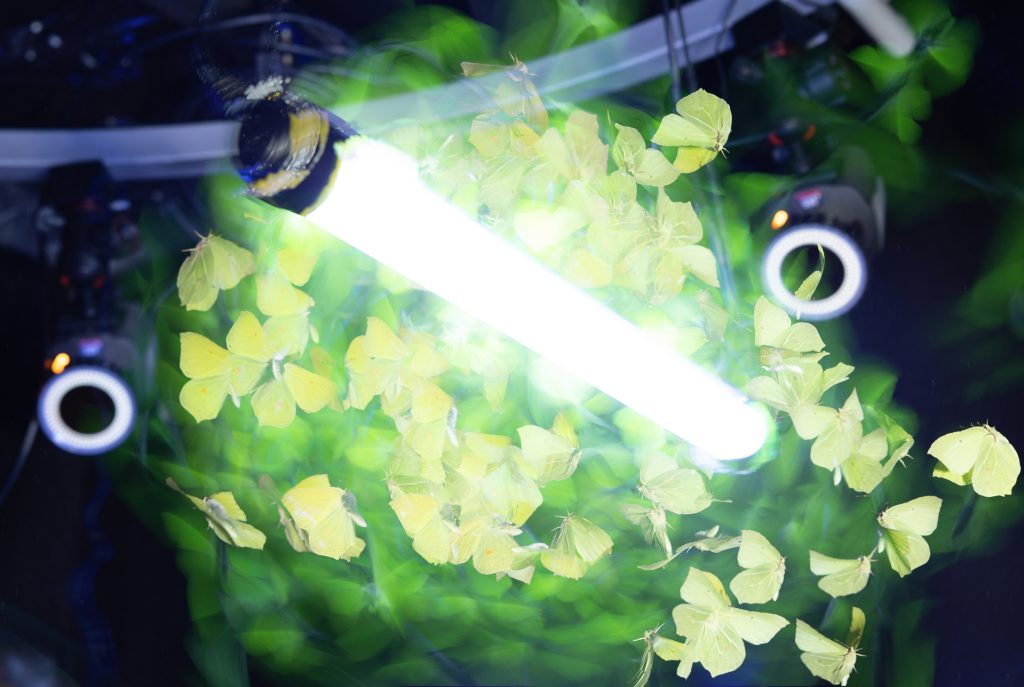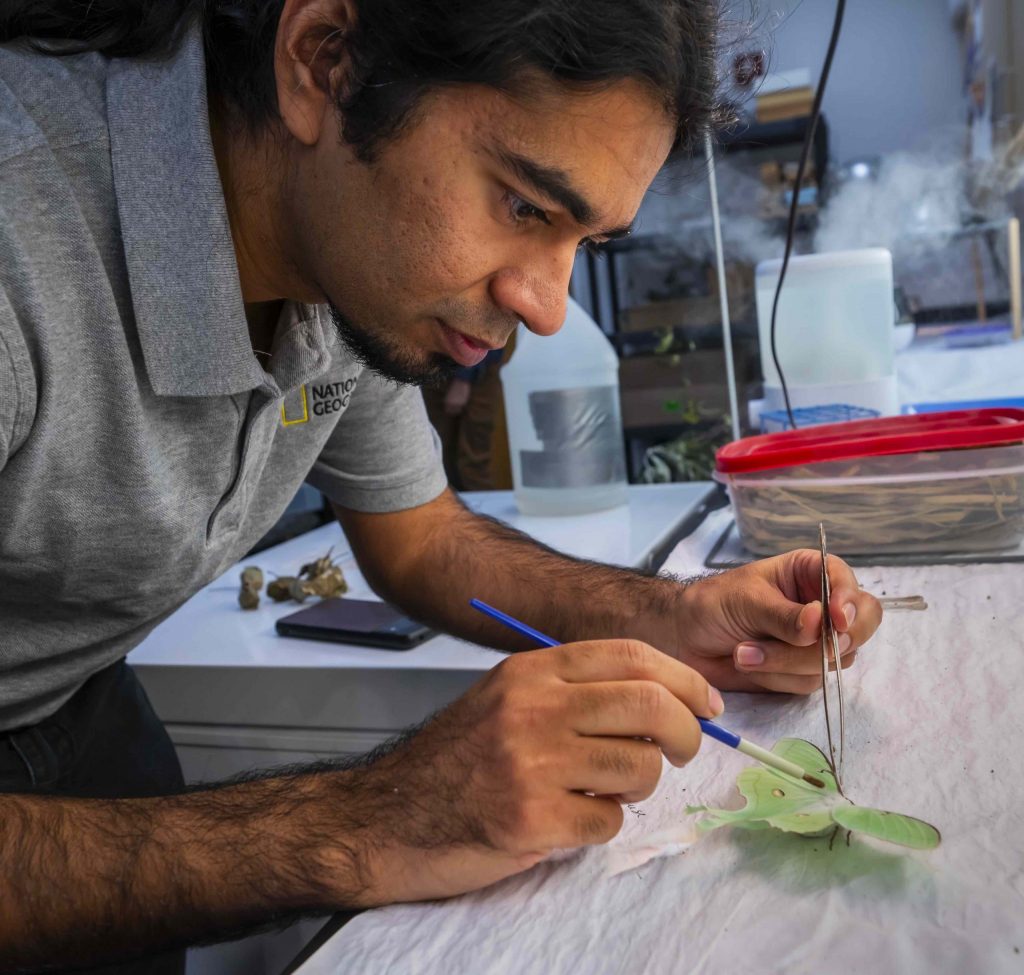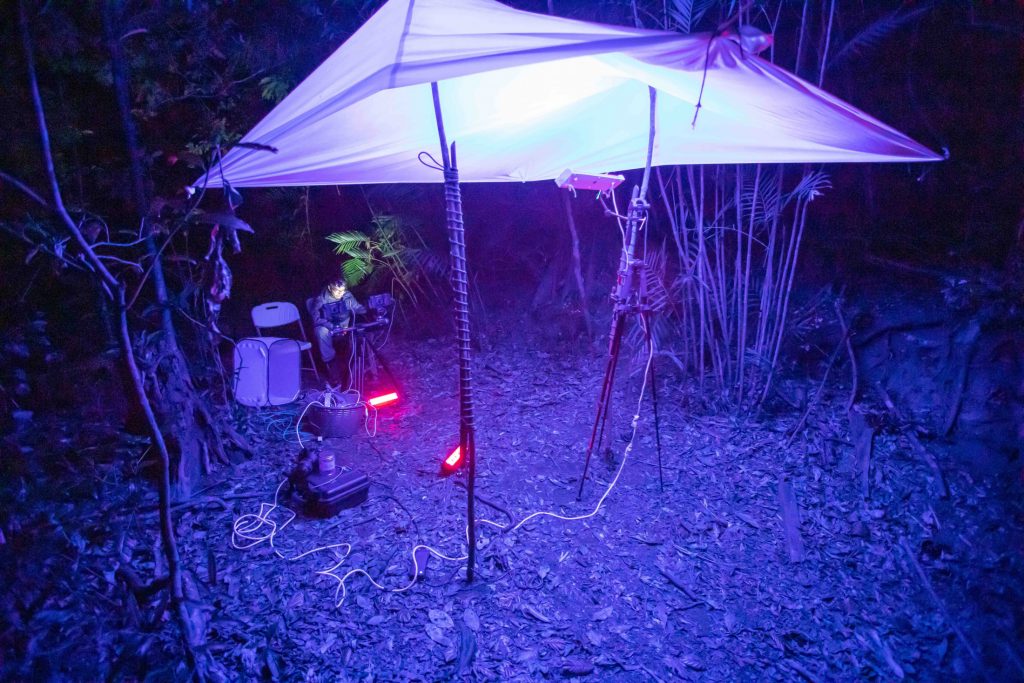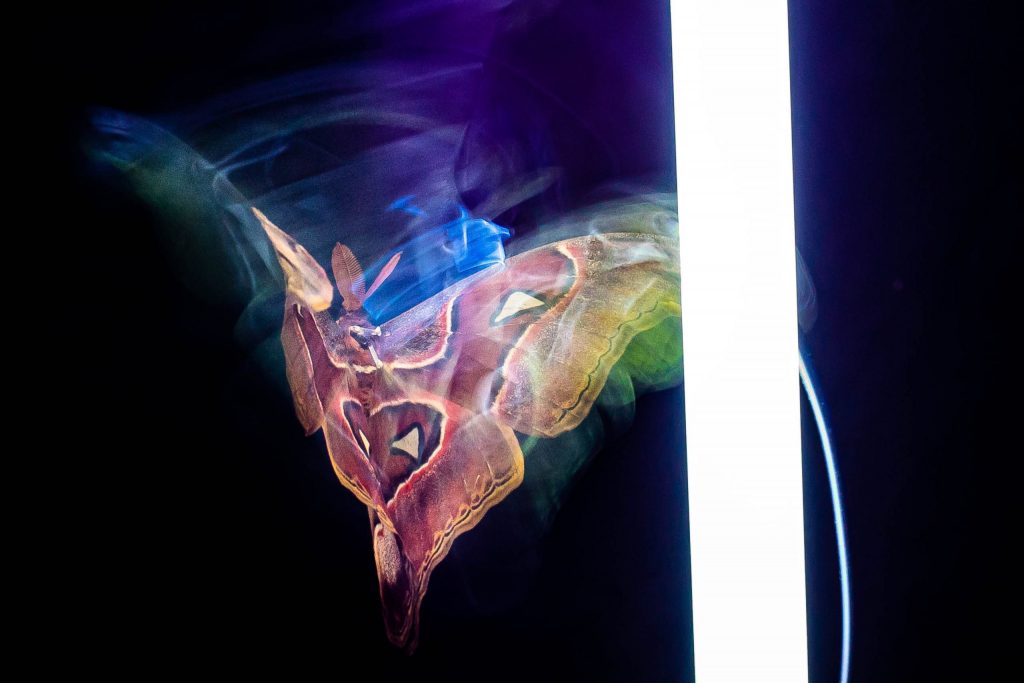At night in the Costa Rican cloud forest, Yash Sondhi and a small team of international scientists switched on a light and waited. Soon, insects big and small descended out of the darkness. Moths with spots like unblinking eyes on each wing. Shiny armored beetles. Flies. Once, even a praying mantis. Each did the same hypnotic, dizzying dance around the bulb as if attached to it with invisible string.
Excitement spread through the group of researchers, even though they’d witnessed this phenomenon throughout their lives. The difference was they now had cutting-edge technology and high-speed cameras — capable of capturing the insects’ fast, frenzied orbits — to map the hard-to-track movements of hundreds of insects and tease out secrets surrounding why they act so strange around light at night.
A surprising detail surfaced in the data: In flight, the insects kept their backs facing the artificial light source.
“You watch the videos in slow motion and see it happening again and again,” said Sondhi, a recent graduate of Florida International University, currently a postdoctoral researcher at the Florida Museum of Natural History. “Maybe when people notice it, like around their porchlights or a streetlamp, it looks like they are flying straight at it, but that’s not the case.”
This never-before-documented behavior, published in the journal Nature Communications, provides a new explanation. For millions of years, insects have evolved to become masters of flight by relying on the brightest thing they see — the sky. Today, our lit-up world throws their instincts for a loop. Insects think the imposter “sky” they find is the real one and get trapped in an exhausting cycle trying to stay orientated. It’s a futile effort that causes clumsy maneuvers and occasional crashes directly into the light source.
A good grasp of gravity is mandatory for all animals, especially expert flying ones, like insects that perform feats of flight that match or even surpass those of human pilots. When flying, though, they experience such rapid acceleration that their gravity sensing becomes unreliable. Instead, they need the sky, even at night, to discern which way is “up” and cruise along, maintaining control in the air. Easy when the light source is gigantic and spread out. When it’s a concentrated bright spot? Not so much.
noon@photo - Adobe Stock
Sondhi started connecting the dots between insect vision, light and flight when he joined FIU associate professor of biology Jamie Theobald’s lab in 2017.
The work really got off the ground, though, when he connected with specialists in the fields of insect flight and sensory systems. Together, they decided to collect and mull over a deluge of 3D flight data to see what, if anything, was revealed. That group included Sondhi and Theobald, as well as Sam Fabian and Huai-Ti Lin from the Imperial College London and Pablo Allen from the Council on International Educational Exchange in Monteverde, Costa Rica.
The research project kicked off at Lin’s lab where Fabian works and has a motion capture arena like the kind used in movies — only insect-scale. Little markers were affixed in an L-shape along the backs of several moths and dragonflies, so when they flew around light, they were also collecting data on how they rolled and rotated and moved through three-dimensional space.
“On one of the very first experiments, I let a large yellow underwing moth take off from my hand and fly directly over the UV bulb, and it immediately flipped upside down,” he said. “But we didn’t know then if the behavior we saw and measured in the lab would also be seen in the wild.”
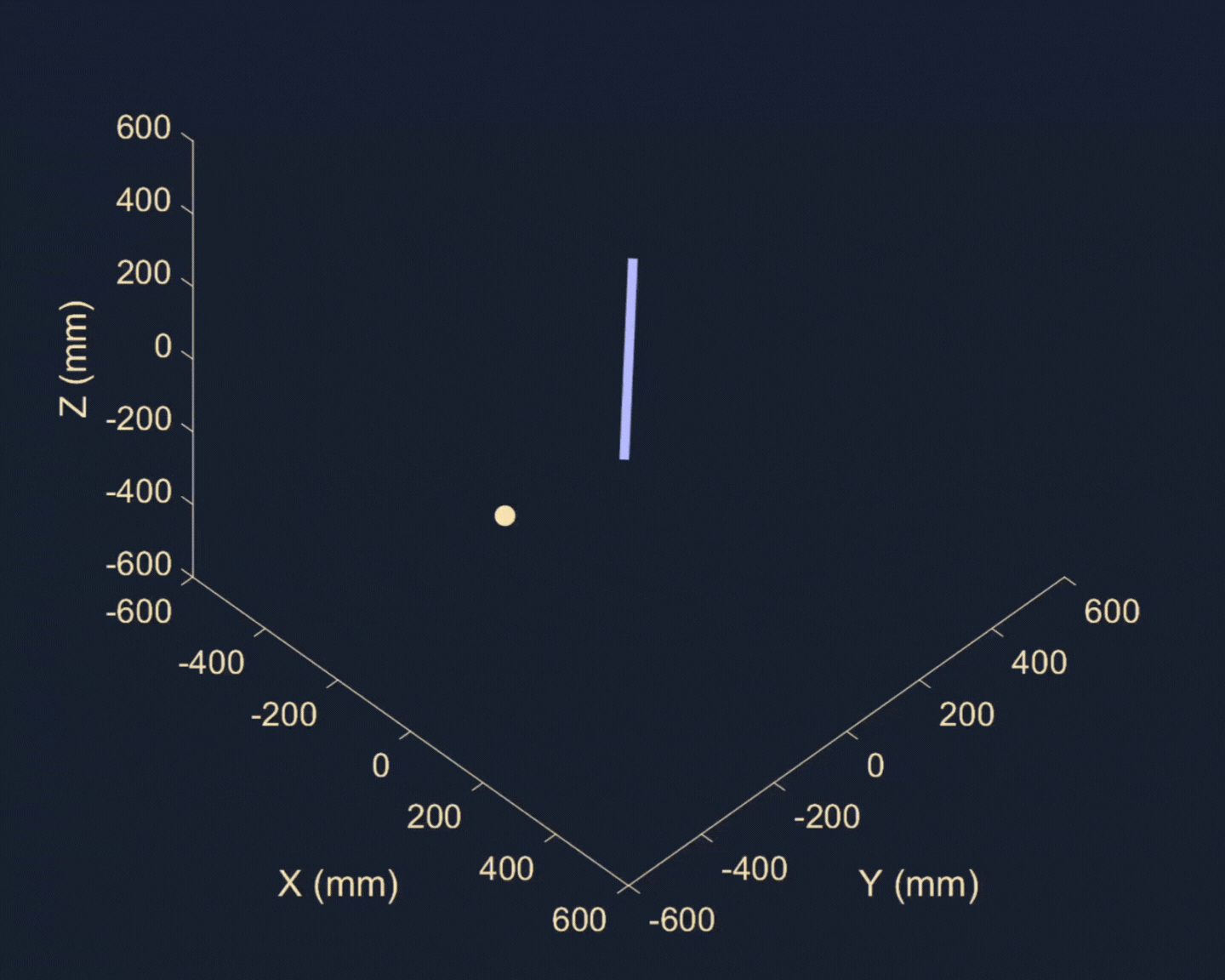
National Geographic funding helped the team travel to Costa Rica — a country rich with diverse insect life — with their cameras to find out. In total, they collected over 477 videos spanning over 11 insect orders, then used computer vision tools to reconstruct the flight paths in 3D. Together with the motion capture data, the researchers concluded all the species did, in fact, do what the large yellow underwing in the lab did.
“This has been a prehistorical question. In the earliest writings, people were noticing this around fire,” Theobald said. “It turns out all our speculations about why it happens have been wrong, so this is definitely the coolest project I’ve been part of.”
Previous theories may not have told the whole story, but this new one throws another issue into even harsher reality: Light is downright disruptive to insects and a conservation concern. The good news is the team’s study suggests light direction matters. The worst type of light is directed upward or emitted from a bare bulb. Shrouding or shielding may be key to offsetting negative impacts to insects.
They’re also thinking about light color and whether warm tones have different effects and, of course, the still unexplained mystery surrounding attraction to light — and how it happens in the first place over great distances. That won’t be easy, but then again, neither was this question.
“I’d been told before you can’t ask why questions like this one, that there was no point,” Sondhi said. “But in being persistent and finding the right people, we came up with an answer none of us really thought of, but that’s so important to increasing awareness about how light impacts insect populations and informing changes that can help them out.”
Funding for the study was provided in part by the European Research Council (ERC-StG No.804315), the National Science Foundation (NSF IOS-1750833), the Florida International University graduate school, the Susan Levine Foundation, the National Geographic Society (EC-82941R-21), the American Philosophical Society and the Tinker Foundation.
Source: Yash Sondhi, yashsondhi@ufl.edu
Media contacts: Angela Nicoletti, anicolet@fiu.edu
Jerald Pinson, jpinson@flmnh.ufl.edu, 352-294-0452
